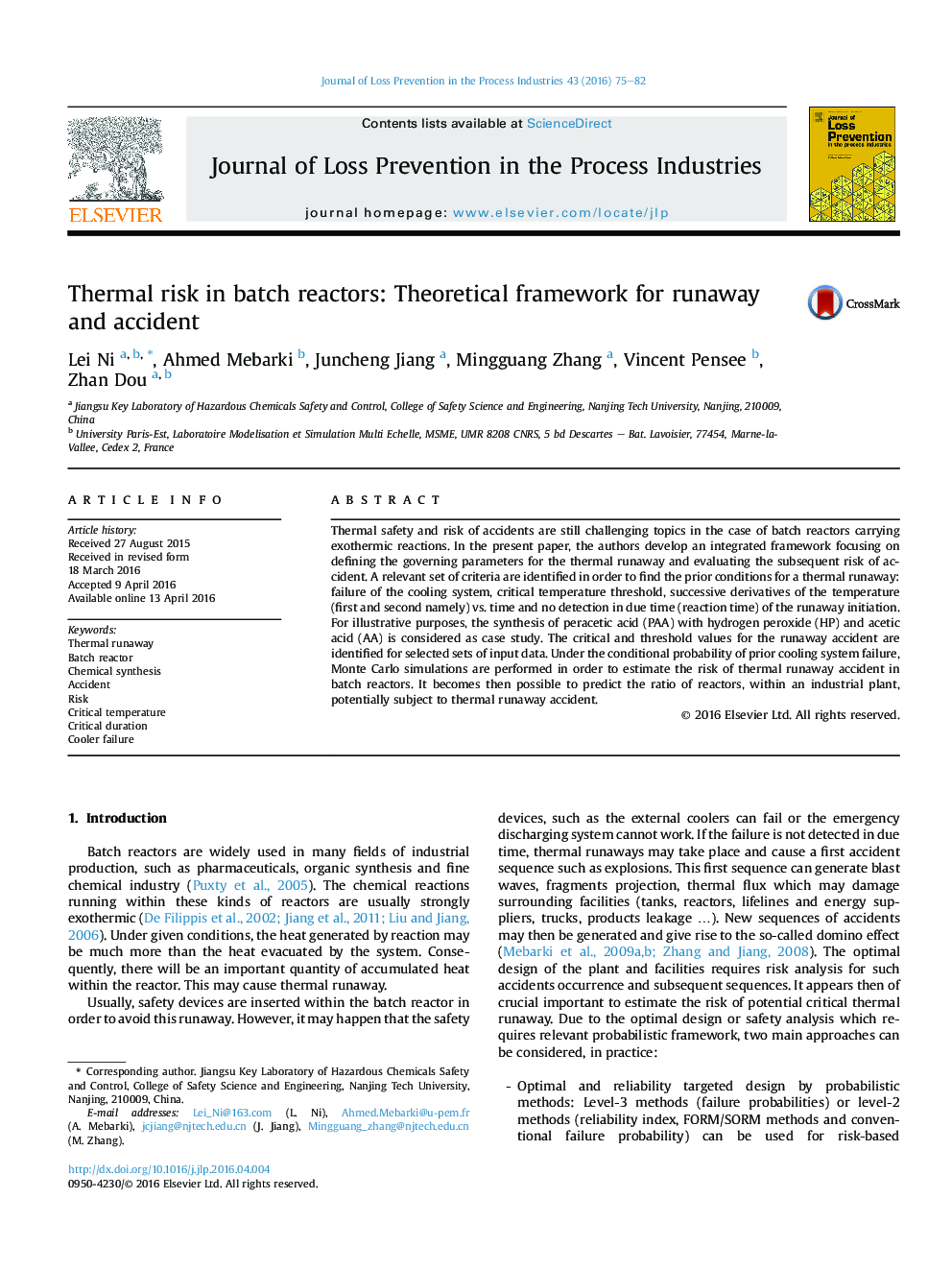| Article ID | Journal | Published Year | Pages | File Type |
|---|---|---|---|---|
| 585912 | Journal of Loss Prevention in the Process Industries | 2016 | 8 Pages |
•Proposal of an integrated framework defining the governing parameters for the thermal runaway and evaluating the subsequent risk of accident.•Identification of the criteria: first and second derivatives of the temperature and time before detection.•Probabilistic description of the prior failure of cooling system for an accident by thermal runaway: evaluation of this accident risk.•Application to a case study: the synthesis of peracetic acid (PAA).
Thermal safety and risk of accidents are still challenging topics in the case of batch reactors carrying exothermic reactions. In the present paper, the authors develop an integrated framework focusing on defining the governing parameters for the thermal runaway and evaluating the subsequent risk of accident. A relevant set of criteria are identified in order to find the prior conditions for a thermal runaway: failure of the cooling system, critical temperature threshold, successive derivatives of the temperature (first and second namely) vs. time and no detection in due time (reaction time) of the runaway initiation. For illustrative purposes, the synthesis of peracetic acid (PAA) with hydrogen peroxide (HP) and acetic acid (AA) is considered as case study. The critical and threshold values for the runaway accident are identified for selected sets of input data. Under the conditional probability of prior cooling system failure, Monte Carlo simulations are performed in order to estimate the risk of thermal runaway accident in batch reactors. It becomes then possible to predict the ratio of reactors, within an industrial plant, potentially subject to thermal runaway accident.
